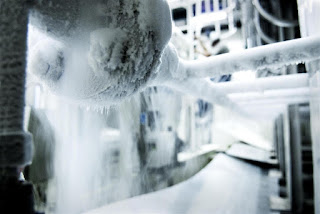Spills.
We’ve all heard of chemical spills or oil spills happening somewhere in the
country or across the globe. Oil spills being one of the most popular hearing
about and also one of the most dangerous. In the United States, the
Environmental Protection Agency or EPA, has made oil spills one of their main
priorities after the Deepwater Horizon oil spill that occurred in 2010.
The
Deepwater Horizon Oil Spill, also known as the BP Oil Spill, began on April 20th,
2010 in the Gulf of Mexico. This spill has been considered the largest
accidental marine oil spill throughout the entire history of the oil industry.
What happened is that an underwater explosion and the eventual sinking of the
Deepwater Horizon oil rig caused the sea floor oil leak that dispensed oil for
87 straight days. As of 2016, BP has invested in the restoration of the
environment along the Gulf. Back in October of 2015, settlement agreements were
filed with the federal court in New Orleans to resolve any and all state and
federal claims arising from the Deepwater Horizon accident and spill. The $18.7
billion settlement included an over $7 billion to address claims for natural
resource damages.
Many don’t know that the EPA is the
lead federal response force when oil spills occur in inland waters while the
United States Coast Guard is the lead response force for spills in coastal
waters or deepwater ports. The EPA’s oil spill prevention program includes the
SPCC or Spill Prevention, Control, and Countermeasure and the FRP or Facility
Response Plan rules.
The SPCC
helps facilities prevent a discharge of oil into navigable waters, adjoining
shorelines, and containing the discharge of the oil. SPCC Plans establish the
procedures, methods, and equipment requirements to prevent any oil pollution.
There are also certain rules that a facility must follow to a SPCC applies to
that individual facility. The first thing facilities must determine is if they
are considered non-transportation related. The second thing is that if the
facility is currently engaged in drilling, producing, gathering, storing,
processing, refining, transferring, distributing, using or consuming oil.
Thirdly, if the facility is reasonably to be expected to discharge oil in
quantities that can be harmful, into navigable waters or shorelines. Next, if
the total aggregate capacity of above ground oil storage containers are greater
than 1,320 gallons of oil. Lastly, the total aggregate capacity of completely
buried storage tanks is greater that 42,000 gallons of oil.
The FRP
rule requires that certain facilities to submit a response plan and prepare to
respond to a worst case oil discharge or threat of a discharge. The FRP
demonstrates a facility’s preparedness when it comes to responding to a worst
case scenario. Facility Response Plans must be consistent with Nation
Contingency Plans and applicable Area Contingency Plans. This means an
individual needs to qualified and has full authority to implement removal
actions and requires immediate communication between that person and the
appropriate federal authorities and responders. It is also stated that facilities
must be able to identify and ensure availability of resources to remove, at the
maximum extent practical, a worst case discharge scenario.









